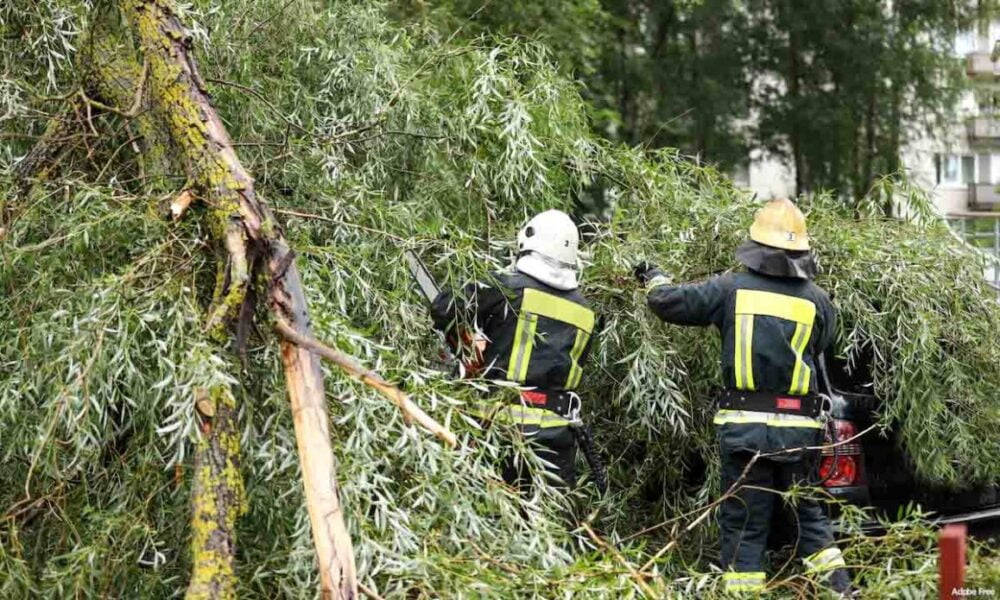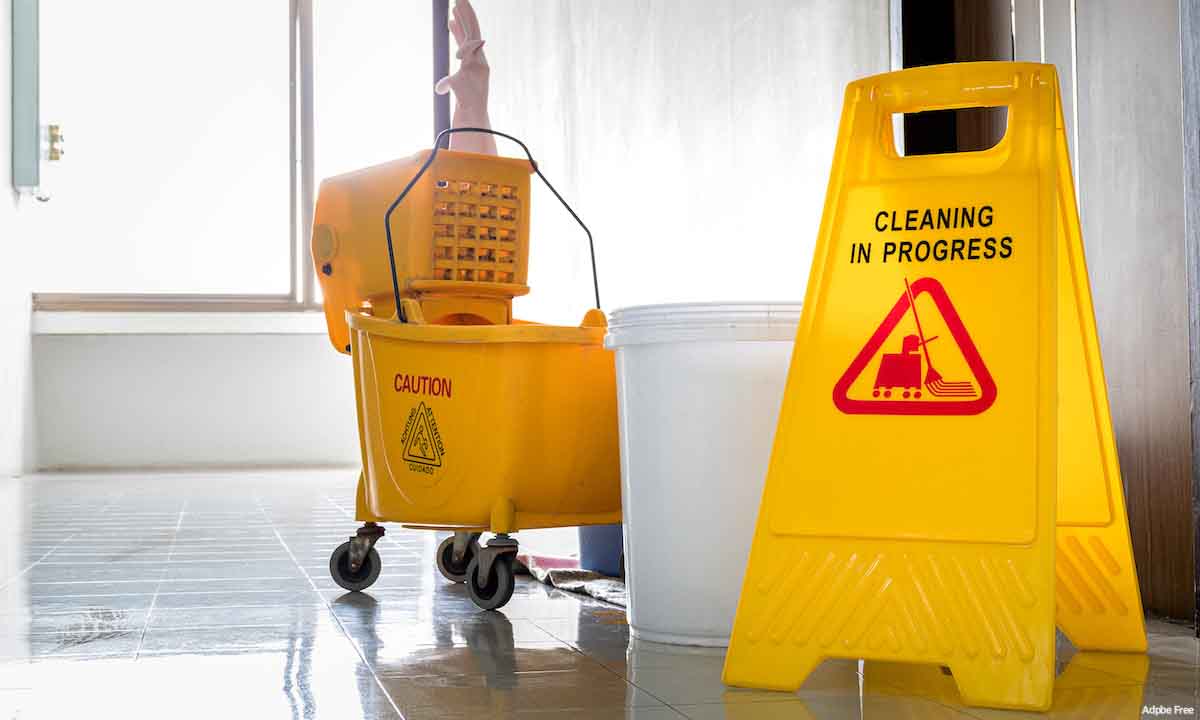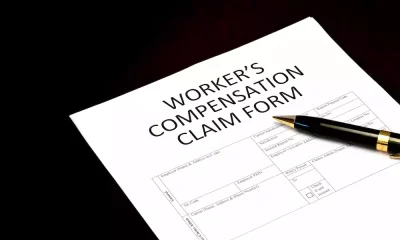General
Cleaning Up After A Disaster: A Small Business Guide

Disasters are catastrophic events that generally occur beyond your control. And depending on the extremity of the circumstance, they can cause adverse effects on properties and businesses.
Disasters such as floods, earthquakes, strong winds, wildfires, etc., can throw your well-laid business plans and projections into disarray. For instance, assets can become unusable, which can significantly affect your capital as you now have to spend money on restoring them instead of using the money to expand your business. Additionally, disasters may break the supply chain, employees may be unable to report to work, and you may lose customers as they move to safer areas.
However, you don’t need to give up and watch your company die. Little by little, you can restore and grow your small business again. And one of the best places to start is by cleaning your business premises, says experts Summit Cleaning & Restoration Services, who, in their recent blog post, provide helpful information on the ins and outs of disinfecting business workplaces.
Cleaning Up Your Business Premises After A Disaster
To help you get started, here’s a small business guide on what to keep in mind when cleaning up after a disaster.
1. Don’t Go Back To Your Business Premises Until It’s Declared To Be Safe
Generally, disaster sites can be chaotic, with various debris and dirt scattered around the area. And in heavy rains or storms, flooded areas can be hazardous due to unpredictable water movement.
The water damage could also weaken the foundation of your small business’s building or office premises, making it unstable and unsafe. With that in mind, to ensure your and your team’s safety, see to it you abide by the advice of the local government, emergency services and responders, and professionals on whether or not it’s already safe to go back and clean up the area or recover your business’s belongings.
2. Hire Professionals To Inspect The Building
When disasters occur, damage can happen to your property and the surroundings. For example, fire, earthquakes, and stormwaters can all excavate, mix, and move things, making the property unsafe. Therefore before you start cleaning up, ensure the water you handle, the air you breathe, and the debris you move aren’t contaminated with dangerous and unsafe materials, including:
- Gas leaks
- Airborne asbestos fibers
- Wastewater
- Underground storage tank chemicals, etc.
With that, it’s advisable to work with professionals, such as engineers and building inspectors, to assess the building and check for gas leaks, chemicals, and other unsafe materials. They can best certify if there are potential hazards that you need to be wary of. Such professionals could also offer assistance in helping you clear up the area to ensure a more efficient and safer clean-up process.
On the other hand, you can also hire building professionals to inspect the building thoroughly and scan the structure for possible damage and overall condition. Doing so can help ensure the building is still structurally sound and safe to be occupied.
3. Acquire The Proper Safety Gear
In light of safety practices, equip yourself and your employees with safety gear, such as the appropriate personal protective equipment (PPE), if you plan to do the cleanup process yourself. That way, you can be protected against any form of health and safety risk like bacteria, debris, chemicals, mold, contaminated water, waste, and other threats.
Start by assessing the dangers and possible risks you’re likely to face. This guides you when selecting the correct type of PPE. Also, train your employees on the importance of having them and how to use and maintain them.
Some safety gear you’d want to obtain includes the following items.
Hard hats
These can protect you against head injuries from falling or flying objects, burns, or electric shocks.
Protective clothing
Use clothing like a long-sleeved shirt and long pants to be safe from hazardous substances and abrasive materials.
Foot protection
Invest in rubber and waterproof boots and electrically insulated boots. You can also use safety boots. Such foot covering and protection can go a long way in helping avoid foot injuries from electrical hazards or penetrating objects.
Eye protection
Eye gear like goggles covers your eye area, helping prevent eye injuries due to dust and other debris.
Safety gloves
Use rubber gloves and heavy, waterproof, cut-resistant work gloves for hand protection when clearing out your business premises from debris, mud, and other dirt.
Respiratory protection equipment
Use N95 masks or other respiratory protection gear to filter air contaminants and avoid inhaling polluted air.
4. Gather The Tools And Supplies Needed For The Cleanup
In most cases, there’s a lot to do during cleanup after a disaster, from removing fallen trees and clearing outside debris to cleaning and restoring the interiors of the building. For an easy and more efficient cleaning process, know and gather all the supplies you need to get the job done.
Here are some of the supplies you may require:
- Bleach, detergents, disinfectant, air freshener
- Scouring pads, scrub brush, buckets, trash bags
- Chainsaw for clearing trees, wrench, rope, screwdriver pliers, hammer and nails
5. Know How To Use Tools Properly
Understanding how a tool operates is essential during the cleanup process of your small business after a disaster. It makes the job less complicated and ensures you perform the task safely and perfectly.
Furthermore, when you’ve little or no knowledge of how to use a particular tool, you can put yourself and other people near you at risk or break the equipment. For example, a chainsaw is a vital tool you may require during disaster cleaning. It enables you to cut up any trees that might have fallen on your property, making them easy to remove. However, this tool can be dangerous if you don’t know how to use it properly.
Did you know some hazards of chainsaw use are hearing loss, kickback, CO poisoning, and pushback and pull-in?
Consequently, you need to pay much attention when using such tools. On the other hand, if you’re not confident in using complex tools, it may be best to leave the job to professionals. That way, you can ensure maximum safety and a faster time to complete the task.
6. Manage Mold Growth
After a disaster like a flood or hurricane, excess moisture and water can result in mold growth on your property. This is a critical issue since molds can pose health risks. They can make you sick, especially if you’ve asthma or allergies.
Did you know mold exposure can irritate your skin, eyes, nose, lungs, and throat? Prolonged exposure to it can increase your sensitivity, leading to more serious allergic reactions. With that in mind, it’s crucial to manage mold growth on your property efficiently to avoid health complications and make the space more livable and comfortable for you and your staff.
Getting rid of mold

Clean and dry your building as soon as possible.
Start by sweeping off excess water and pushing it through designated exits.
Drain the floor by using mops, push brooms, and squeegees.
It’s also recommended to open up your doors and windows for the building to air dry. You can also use a dehumidifier and window air conditioners to reduce moisture. Additionally, desiccants can absorb moisture in enclosed areas where air can’t circulate.
Remove all porous items
Wood, paper products, carpet, etc., that have been wet for at least 24 hours absorb and retain moisture which is ideal for mold growth.
Clean exposed surfaces with disinfectants or sanitizers.
Ensure you also clean and wipe dry all items submerged in the water, such as chairs, desks, curtains, and other items, with hot water or detergents.
Remove items you can not clean
Discard anything you can’t clean or dry quickly, like books and upholstered furniture.
7. Clean And Restore Your Furniture
As a business owner, all business assets and belongings are considered significant investments. These include office essentials such as furniture, tools, supplies, and electronics. However, in cases of disasters like flooding, these could get damaged. Some may not be functional, while others may still be cleaned and restored.
You can check if the warranty period still covers this for electronics and other equipment or appliances that have been soaked in the floodwater. You can have them repaired, depending on the extent of the damage.
If you have wooden furniture in your office, such as desks or chairs, or perhaps you have wooden display shelves in your store, floodwater can cause these to swell and cause discoloration or watermarks.
One of the things that could help restore your wooden furniture is drying it thoroughly so you can get rid of moisture. If you can let them sit under direct sunlight without damaging the timber – do it. Plus, you can use a wood cleaner solution to clean lightly stained furniture. However, for extreme cases where you’ve got antique or native timber furniture seeking professional help may be best.
Furthermore, if you have furniture pieces with fabric materials, it’s essential to thoroughly clean and disinfect them to get rid of bacteria and other contaminants. You can pressure wash them and dry them afterward. But depending on the damage and exposure to contaminated water, you can opt to replace them instead.
Wrapping It Up
Cleaning up your small business premises after a disaster can be a tedious and overwhelming project to take. Aside from various tasks involved in cleaning and restoring your office space, you’d also have to be wary of possible risks that may endanger the health and safety of you and your staff.
Therefore, for this reason, it’s essential to learn and know precautions to take during disaster cleanups, such as ensuring you have the right gear to avoid injuries, contamination, and other health risks. Furthermore, you can always seek the help of cleaning professionals to help you with the job.









